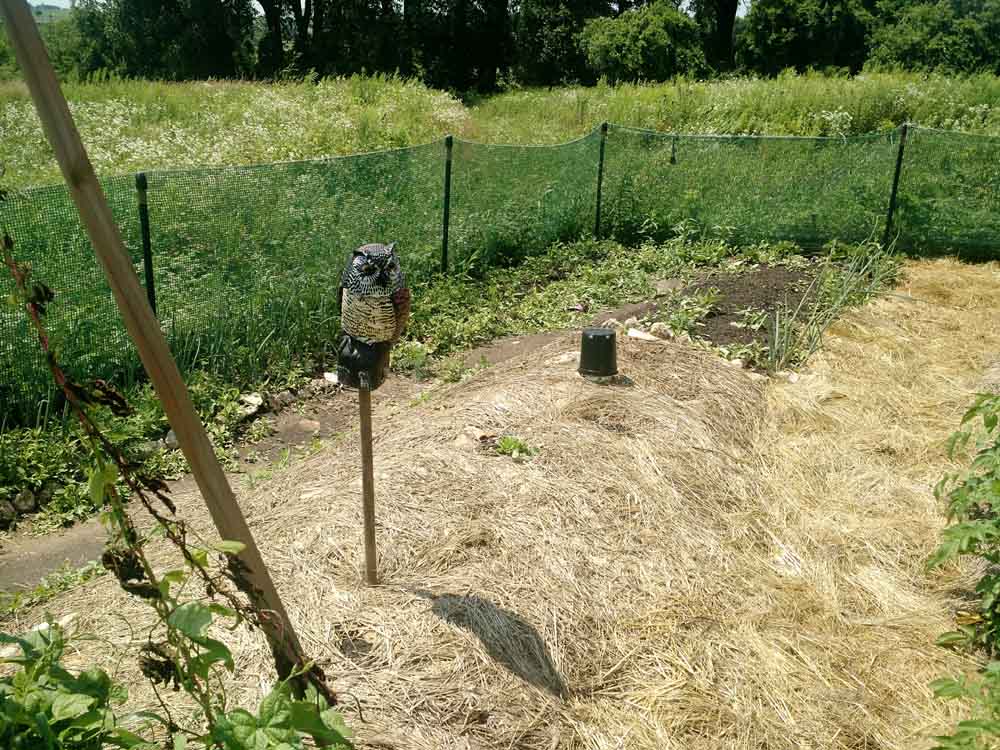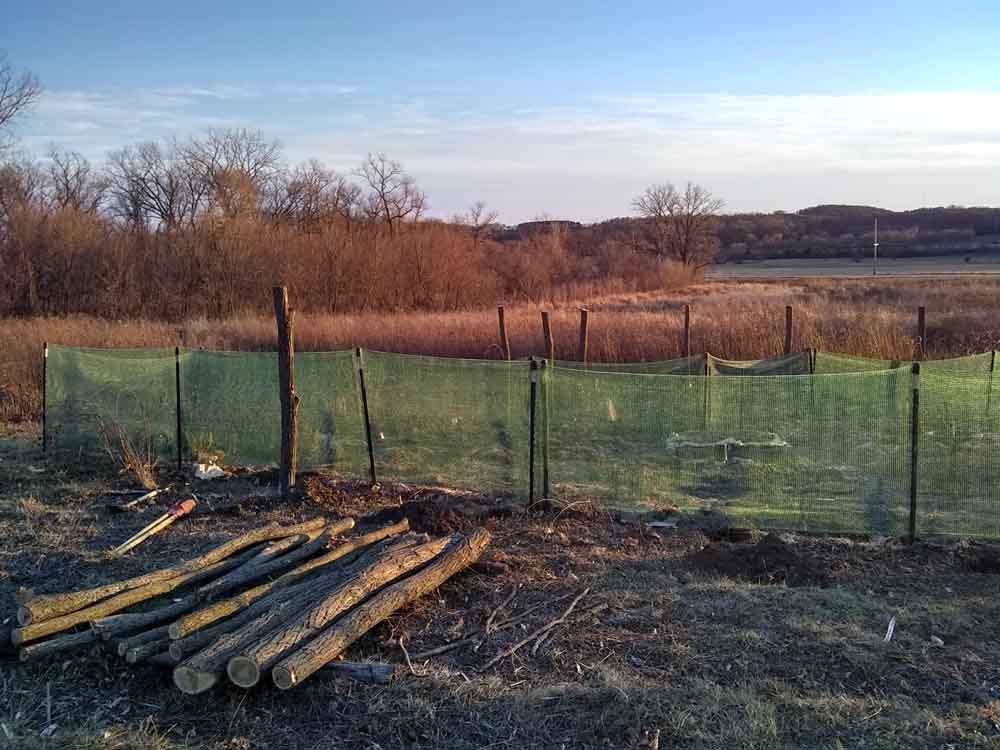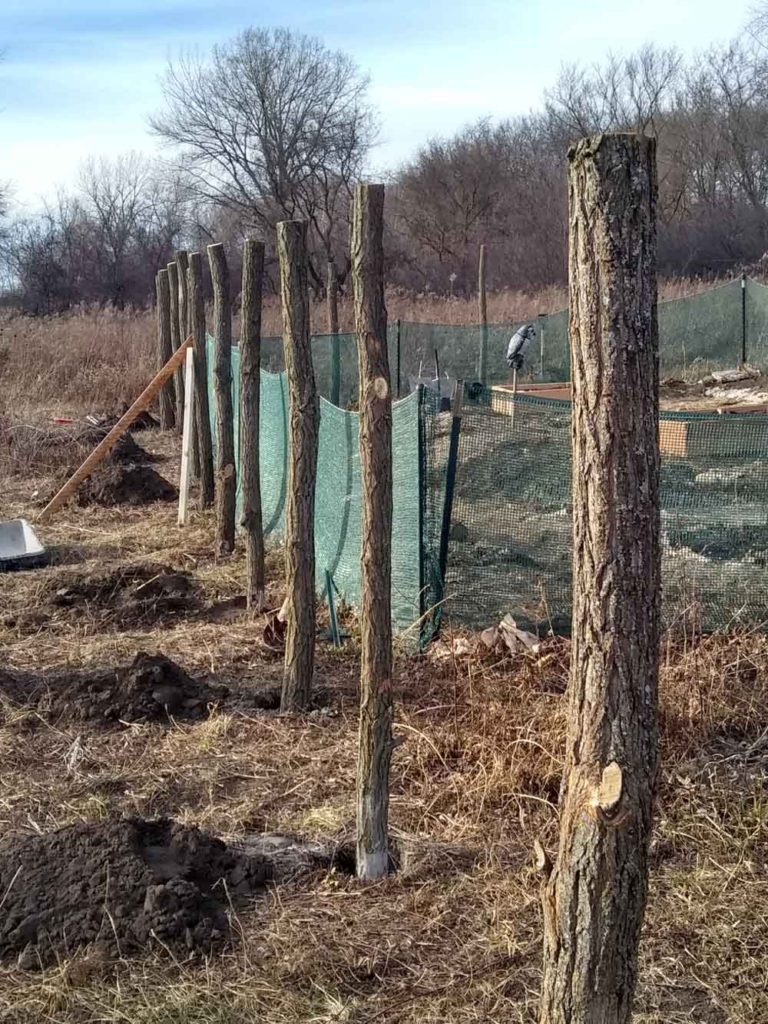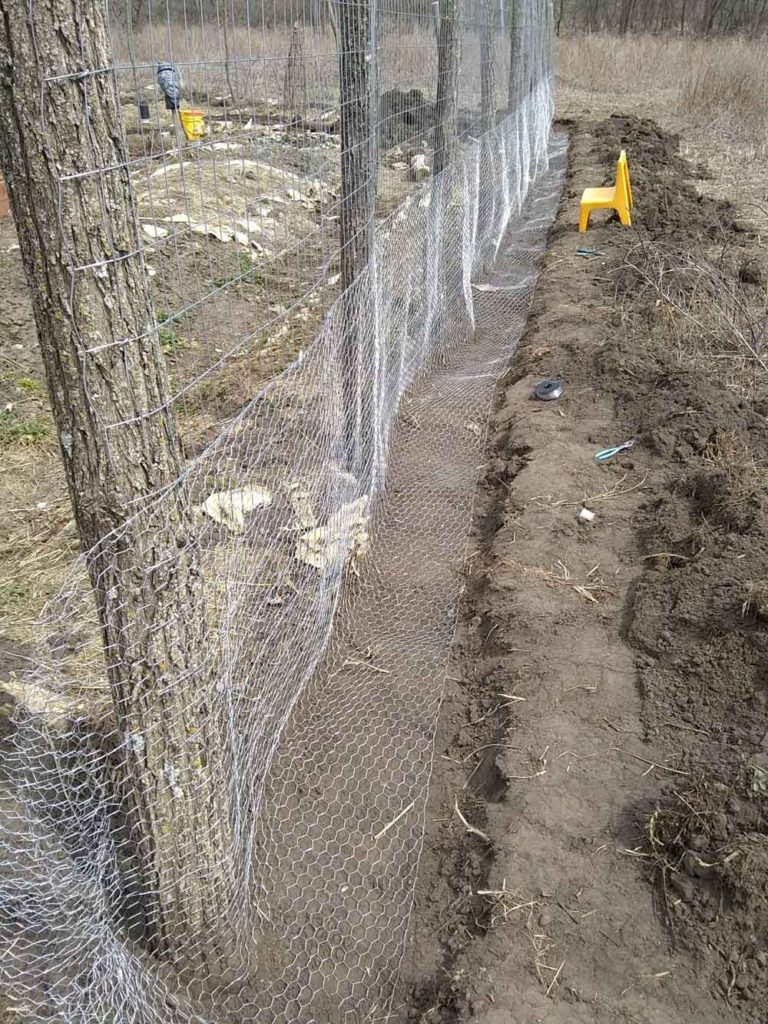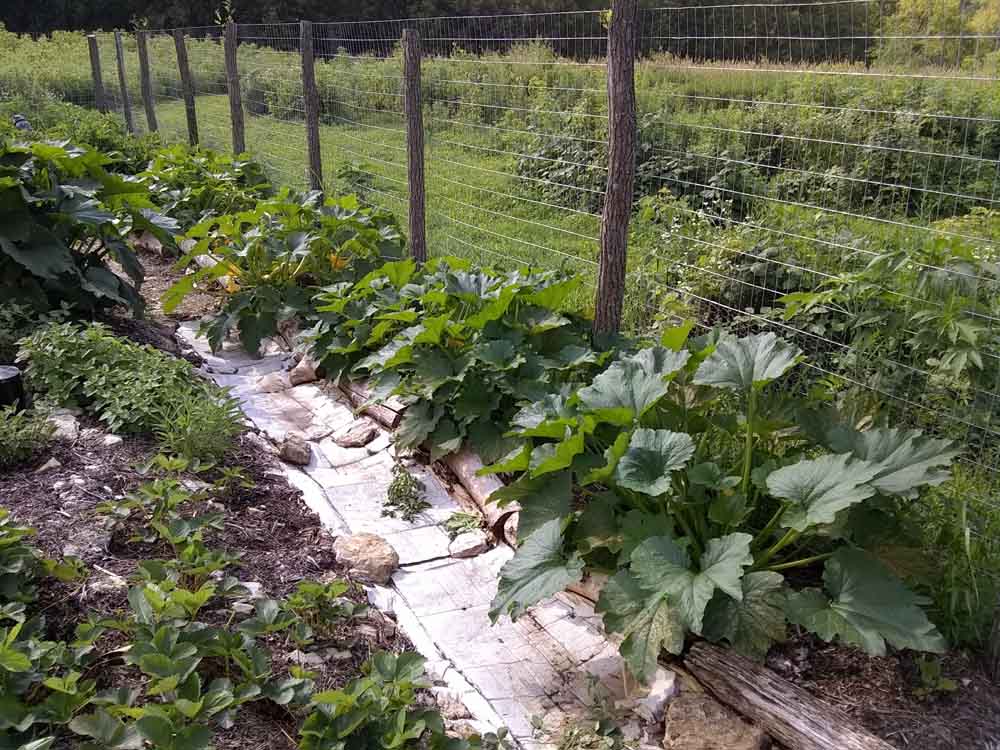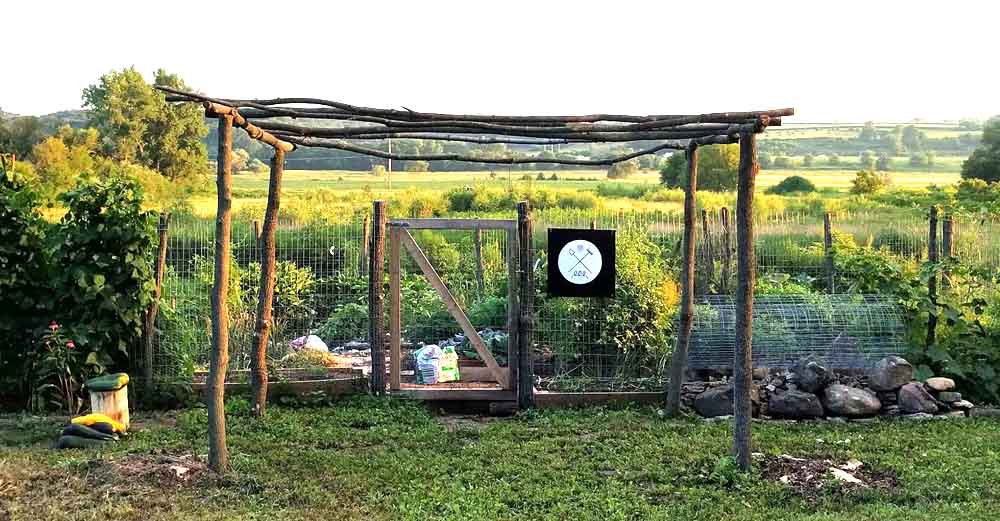By Matt
When we first came to Rochester we rented a house which did not have garden space so we rented a community garden plot in Zumbro park south. We put up a flexible mesh garden fence to guard against rabbits and deer. Since it was in a well traveled park those creatures were not too much of a problem, however my son and I spent most of the time in the garden that summer picking the Colorado potato beetle and their eggs off of our potato patch. We were able to beat them back well enough that we had a decent harvest, while other community garden participants had their potato plants eaten all the way back to the stems.
When we bought our 27 acres we didn’t have enough time to make a proper garden fence and resorted to using the one we used at the community garden plot. By then it was a little worse for wear and I don’t think it kept out determined rabbits or deer, especially now that we were on 27 acres of deer and bunny infested (graced) forest and farmland. Below is a photo of the old fence, and the owl guarding the hugelkultur mound.
When we wanted to make a more secure fence we did some research on how we could use something that didn’t use expensive metal or 4 x 4 posts. Black locust trees are reported to be very rot resistant and fortunately we had access to a grove of trees that needed some editing (Black locust is difficult to control because it grows rapidly and exhibits clonal spread). We planned out how much we wanted to expand the garden, enlarging to a rectangular footprint of 25′ x 50′, and calculated how many posts we needed for a post every approximately 6 feet. We harvested trees that were 2-6 inches in diameter, cut them to 8 feet in length and then trucked them to the garden site. Here is several posts going in and another shot of the old garden fence.
We only have about 12-15 inches of top soil before one runs into limestone gravel/sand and then large chunks of limestone. We decided that was not enough to support the posts so we dug as deep as we could, inserted the post and then added 3-6 inches of concrete to secure the post.
We then used fence staples to attach a six foot metal fence to the posts to which we attached a three foot chicken wire fence, with a foot buried along the ground to inhibit burrowing animals.
Here is a picture of the final product from the inside and number of zucchini and squash plants (way to many) planted along the border.
We used the same fencing material and two by fours to construct a swinging door. We also made a pergola out of tree posts which we hope to have covered in grapes.
It will be interesting to see how long the black locust posts last, hoping to get 7-10 years out of them. This first year many of the posts actually had branch shoots emerging.
